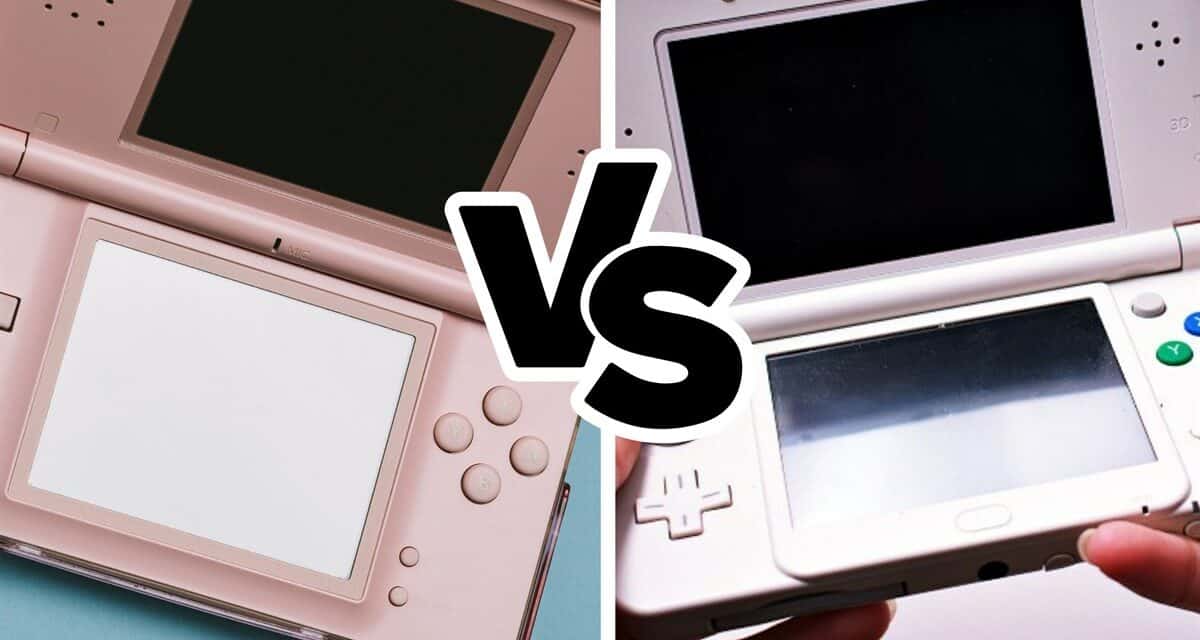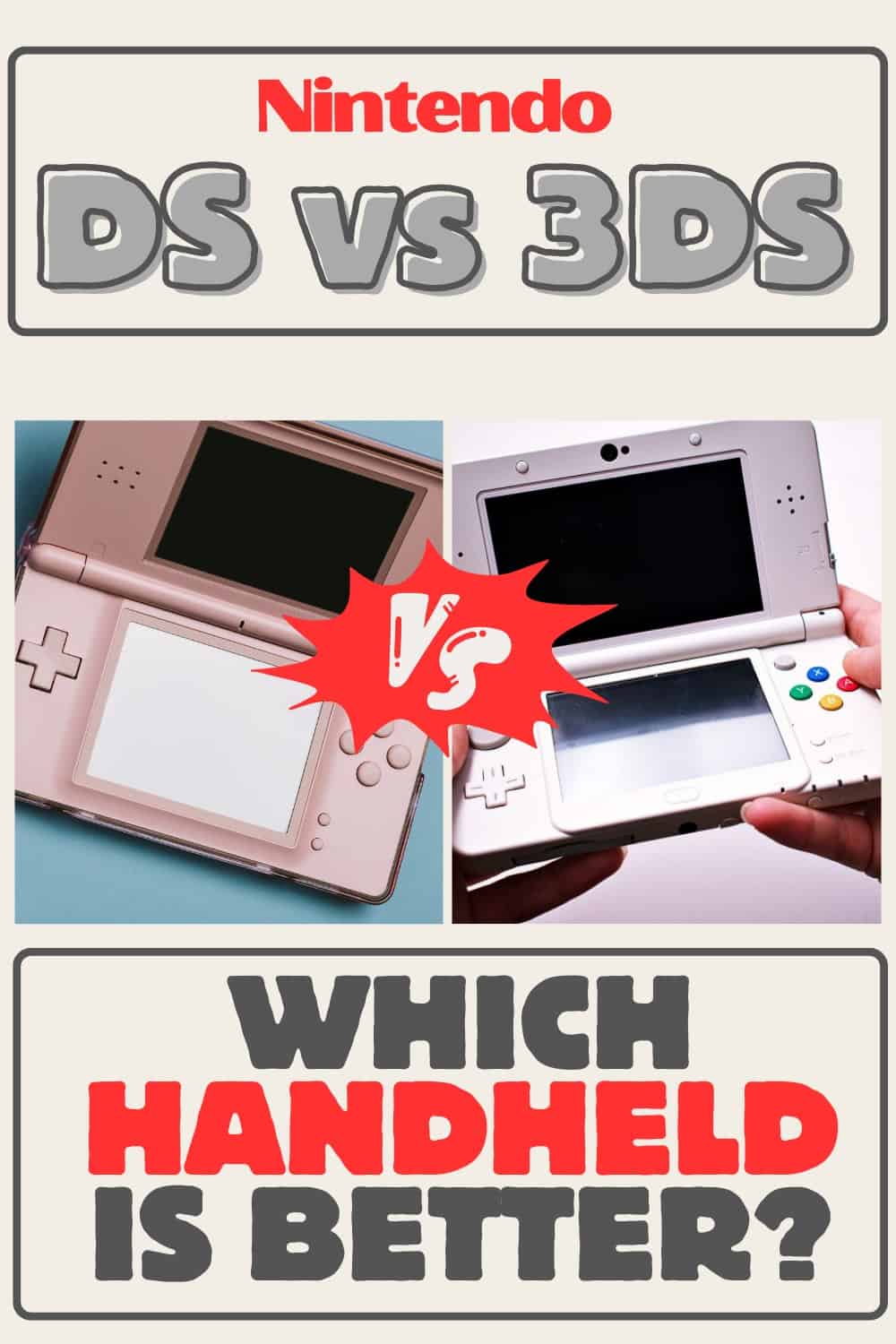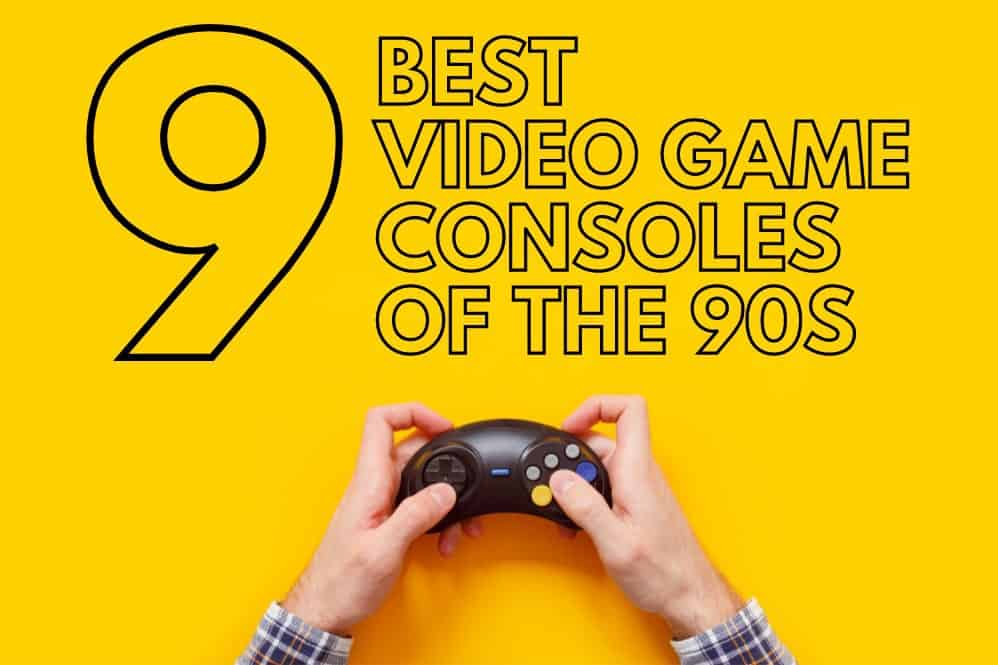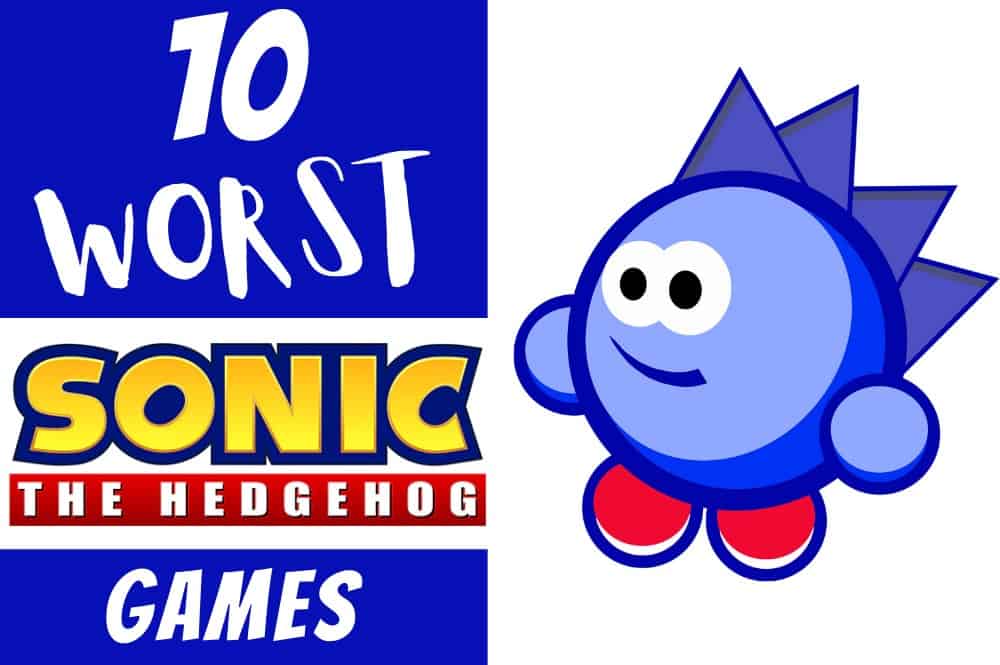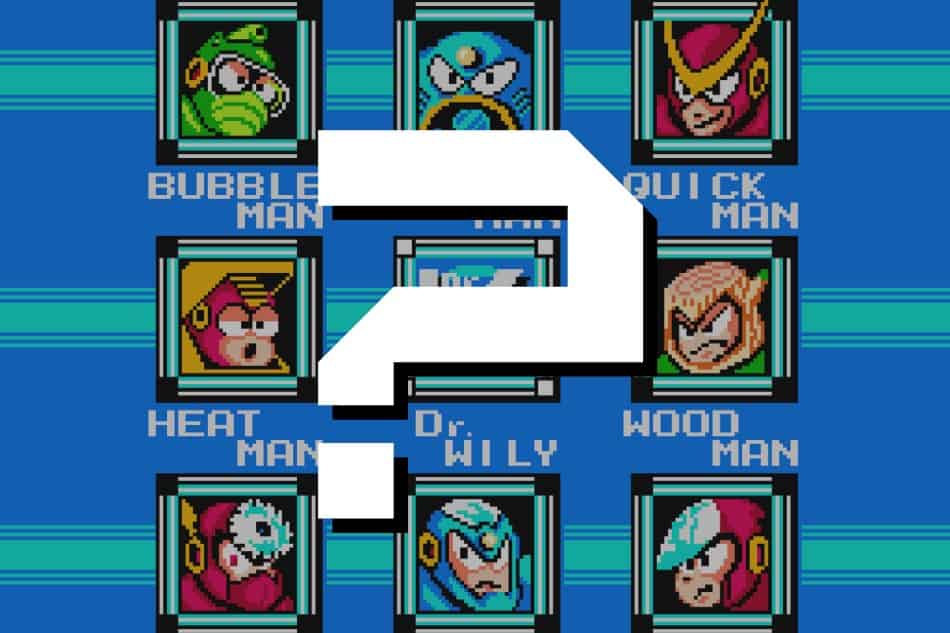Regardless of which version you prefer, the Nintendo DS line of consoles can still boast that they are the best handheld consoles ever.
A super comfortable design with excellent hardware, a huge catalog of games, and interactive features that go beyond pressing buttons, the DS has it all. And that’s why many gamers want one today, either to relive old times or because they couldn’t try it at the time.
For all those who identify with this, they are probably wondering which iteration they should buy, and it is a question that deserves to be analyzed.
Generally, the comparison is between the classic Nintendo DS vs 3DS, the latest installment in this line of handhelds. The Nintendo 3DS is the newer, more powerful console in both technical and gameplay aspects, but game compatibility is where this topic goes in two very different directions.
Both the DS and 3DS have already reached the end of their life cycles, which were extremely fruitful and prolific. I will use this to base the comparisons along with other technical aspects that will surely help you decide on one.
Brief Summary Of Each Handheld Console
The Nintendo DS
After the huge success of the Game Boy, Nintendo had a hard time surpassing themselves, but boy, did they deliver. At the end of 2004, the Nintendo DS arrived to completely revolutionize the gaming industry.
The concept of taking your console everywhere you go had been explored several times before, but the DS perfected the formula to the point where it became the flagship of handhelds.
Apart from being able to play video games on it, you could also play multimedia, something innovative for the time.
The concept of two screens and one of them being a touchscreen was another factor that delighted gamers, adding new gameplay mechanics to all its titles. And speaking of games, it had a lot of them.
The Nintendo DS line of consoles was discontinued in 2013. After 9 successful years in the market, it became the second best-selling console in history with 154.90 million units sold, only behind the PlayStation 2.
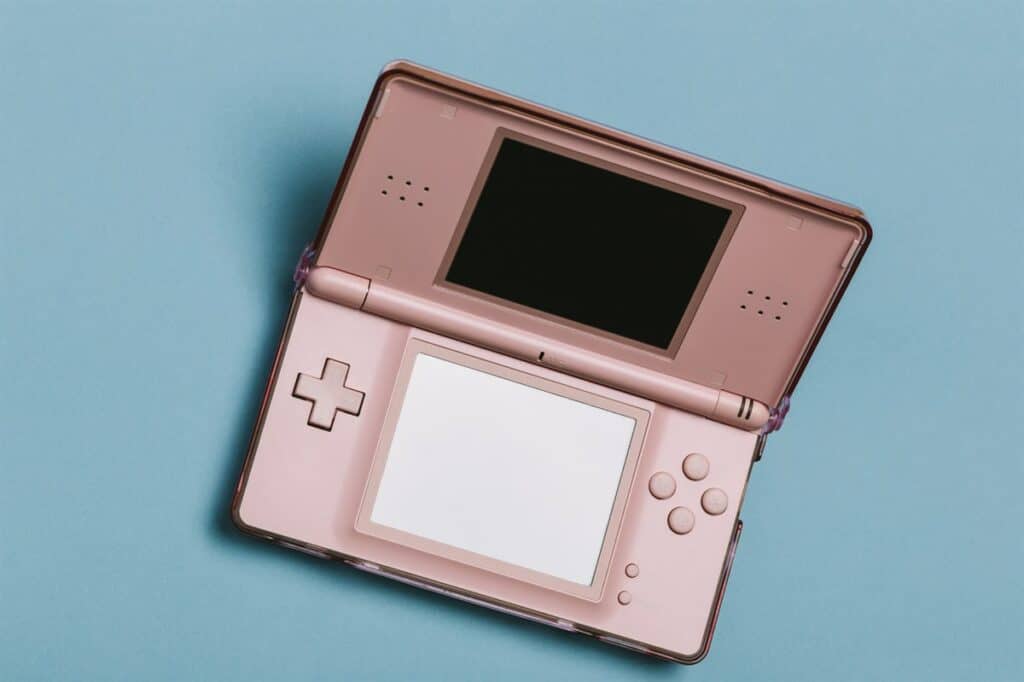
Nintendo DS Versions
One of the biggest reasons why the DS was so successful was its size and ergonomic design. As is customary with consoles for decades, it had several redesigns that improved some elements of the original model as well as offered new sizes.
Looking back, we had the following versions of the DS
- The Original DS (DS Phat)
- The DS Lite
- The DSi
- The DSi XL
which in turn improved aspects such as screen brightness and battery life, as well as the thinness and quality of materials, although the hinges of all its models always gave something to talk about in a way that was not always positive.
It was from the DSi onwards that Nintendo abandoned backward compatibility with Game Boy titles. One of the few things that is considered a downgrade, but it is understandable because they concentrated on other aspects.
Nintendo DS Game Catalog
The Nintendo DS has one of the most extensive and varied libraries, as it had several gems and incursions of genres that were not usually consumed in the Occident, so the user of the portable could count on an endless number of genres.
Of course, the Mario Bros adventure games were the most successful, including Super Mario 64 DS, but there was also plenty of room for puzzlers, sports titles, and JRPGs galore.
In total, the DS has 1791 games released in the United States. Worldwide, it is presumed to be over 4000. That’s not counting its backward compatibility with Game Boy and Game Boy Advance titles.
Top 5 Best-Selling DS Games:
- New Super Mario Bros.: 30.80 million.
- Nintendogs: 23.96 million
- Mario Kart DS: 23.60 million
- Brain Age: 19.01 million
- Pokémon Diamond, Pearl, and Platinum: 17.67 million
The Nintendo 3DS
The Japanese company squeezed everything it could out of the DS, launching its latest version at the beginning of 2011, the 3DS, whose main feature was made clear by its name.
The ability of this console to output 3D graphics without the need for glasses is something that still surprises today, but it had many other features that made it special.
With a new joypad, a more powerful processor, and unique online features to share with other users, the 3DS closed out the success of the DS in style with 77.49 million units sold.
In September 2020, the discontinuation of the 3DS system was announced along with the New Nintendo 2DS XL, so that the Japanese company could concentrate entirely on the Switch family.
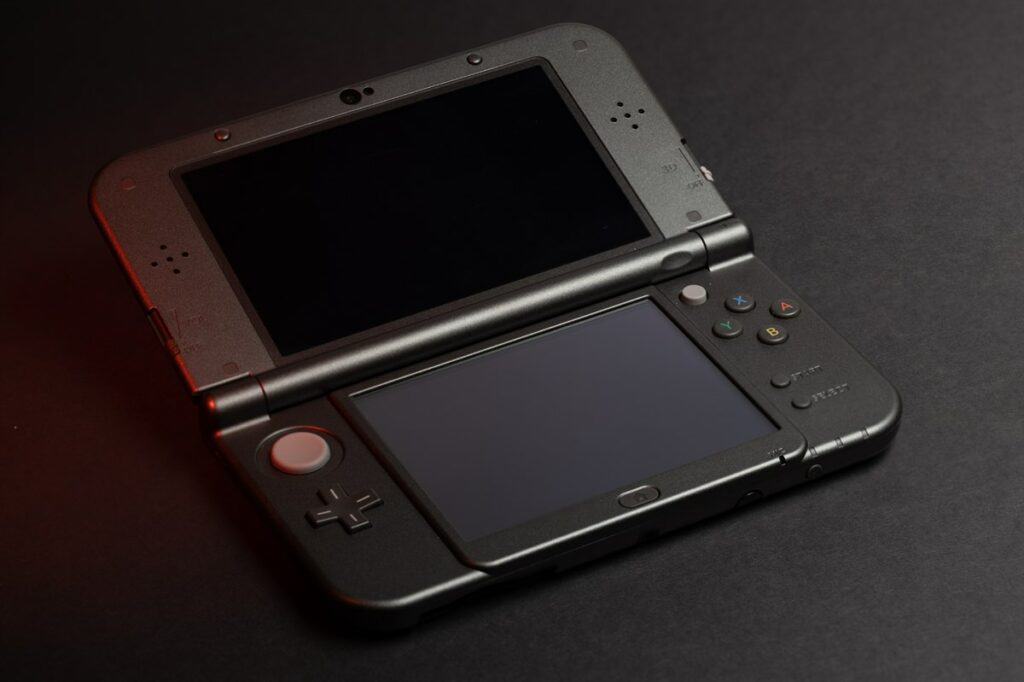
Nintendo 3DS Versions
Diversification was what stood out the most in the various 3DS redesigns. From the numerous color and presentation editions, through sizes, materials, and progress in terms of battery time (Nintendo 3DS XL) while controls and graphics processing capabilities were part of the offer (the ‘new’ Nintendo 3DS).
Another factor that triggered the birth of new models was the 3D stereoscopic effect that was not recommended for children under seven. Nintendo’s response? Nothing less than one more variation, the 2DS, which aimed to appeal to parents, while the hardware as such resembled that of a small tablet, with its respective XL edition.
The 3DS had a total of 6 designs:
- Nintendo 3DS
- Nintendo 3DS XL
- Nintendo 2DS
- New Nintendo 3DS
- New Nintendo 3DS XL
- New Nintendo 2DS XL
Nintendo 3DS Game Catalog
Something peculiar that happened with the 3DS was that it did not have many titles from third-party developers, but that did not prevent gems such as Bravely Default, Resident Evil Revelations, Final Fantasy Explorers, Monster Hunter Generations, several Dragon Quest and Shin Megami Tensei titles to arrive in its game library.
Despite this, Pokemon and Mario Bros were the protagonists of game sales on the 3DS, making it quite clear that users purchased a Nintendo console to enjoy its famous exclusives. In total, the 3DS has 1313 games available in its catalog, without adding all the DS games that can be played on this console, as it also has backward compatibility.
Top 5 Best-Selling 3DS Games:
- Mario Kart 7: 18.95 million
- Pokémon X/Pokémon Y: 16.58 million
- Pokémon Sun and Moon: 16.27 million
- Pokémon Ruby Omega Sapphire Alpha: 14.46 million
- New Super Mario Bros. 2: 13.39 million
Technical Comparison: DS vs 3DS
For this section, we’re going to compare the base models of each console. Let’s throw in a little spoiler for once, and that is that the 3DS is the winner in most aspects, but the DS has more than one ace up its sleeve.
Design and structure
In this section, both consoles are almost identical, from the position of the buttons and their ergonomics. As it is mere aesthetics, it is up to the user which one you like more, although the 3DS is slightly more elegant and eye-catching than the DS.
- The DS weighs 275 grams while the 3DS weighs 250 grams.
- The 3DS is slightly bigger than the DS by an almost imperceptible difference, but it is still more comfortable to carry than the DS.
- The top screen of the 3DS is slightly larger, while the bottom screen is the same on both consoles.
- The buttons on the DS are more resistant to touch, while those on the 3DS are a bit flimsy.
Performance
Being a newer console, the 3DS takes this category by a landslide, boasting power that the DS is unable to replicate due to its older technology.
- The 3DS’s processor is an ARM 11 that can perform at 266MHZ, far superior to the ARM946E-S at 67MHz of the DS.
- The same is the case with RAM. While the DS has a mere 4MB, the 3DS boasts 256MB RAM.
- A unique feature of the 3DS is its in-system GPU, the Pica200 DMP, which reaches a maximum of 15.3 million polygons per second with their respective filters (per-pixel lighting, procedural textures, or antialiasing).
Display
Once again, the 3DS triumphs in this section.
- The screens of the DS are TFT LCDs, which, although they did their job very well, are now an outdated technology. In contrast, the 3DS’s LED screens continue to look great to this day, with better resolution, better color rendering, and an excellent brightness range.
- In more technical language, the resolution of both DS displays is 256 × 192 pixels (4:3). In contrast, the upper screen of the 3DS is 800×240 pixels, offering a more panoramic image than the upper screen of the DS along with its famous 3D view. The lower screen of the 3DS is still superior to the DS, with 320×240 pixels.
Battery
While both consoles feature lithium-ion batteries, the 3DS’s battery life is more variable, lasting from 3 to 8 hours. With 3DS exclusive titles and the 3D function activated, the battery will be consumed faster.
On the other hand, if you play backwards compatible titles, you can reach the maximum battery life. The DS is not as bad in this aspect, as it can withstand up to 6 hours of gameplay, without varying as much as the 3DS. Both consoles are affected by the brightness level of the screen.
Another point quite similar in both is that the DS battery is fully charged in 4 hours, while the 3DS battery requires 3 and a half hours.
Camera
We automatically declare the 3DS as the winner in terms of camera, as the DS started to include this tool from the DSi onwards.
The 3DS includes front-facing and two rear-facing 0.3-megapixel cameras. It’s not the best resolution, but it makes up for it with the ability to take 3D photos, saving them in JPG format so you can send them to other devices. And if you’re more daring, you can also record in 3D for up to 10 minutes.
Storage
There is an important point to make here, and that is that although the storage of the 3DS far exceeds the capacity of the DS, the latter does not need this component, because you can not save games on your system, only play them through the cartridges.
- The Nintendo DS has a 256kb flash memory card, which is enough for all its functions that do not require saving games, which is a disadvantage if you do not have many cartridges.
- The base 3DS comes with a 1GB card, but you can exchange it for a card up to 32GB, plenty of space for all your games and multimedia content.
Interface
The DS is very straightforward so to speak, you insert the cartridge and play, although it does include a rudimentary menu with some options, such as settings or jumping to Game Boy mode. This changed with the DSi, where Nintendo added a more intuitive and updated Wii-like menu.
On the 3DS, the interface was greatly improved, allowing the user to customize it in many ways. It’s certainly not something that affects gameplay, but many gamers are very interested in this kind of aspect in a console.
Games
We had already talked about this in the catalogs of both consoles, but there is something else to add. Despite the DS having hundreds of famous titles, they don’t offer as much as the exclusive games on the 3DS.
Being a much more powerful console, the 3DS can play larger games, with bigger worlds to discover, more detailed graphics, and other complex features that a DS can’t deal with.
Backward compatibility
We come to a point that will help you a lot in deciding which of the two consoles you want. While the 3DS is backward compatible with all titles released for its predecessors, some DS models are backward compatible with GBA, Game Boy Color, and original Game Boy games. This adds up a lot in its favor if you’re a retro fan.
The DS has this feature thanks to its bottom slot, into which you can insert games from that classic console with improved graphics and performance. The same goes for the 3DS, playing DS and DSi titles in a smoother and more powerful way.
Features
It is almost unfair to place the DS to compete in this category, as it has hardly any options beyond playing games. Instead, the 3DS offers several services that will make you spend hours using the console without playing a single game.
Here are the most outstanding tools of the 3DS:
- Platforms like YouTube, Netflix, and other Nintendo apps. Although the 3DS is not the most optimal for playing videos from these sites, it never hurts to have them.
- Internet browser.
- StreetPass and SpotPass services that connect all 3DS users around the world. It’s kind of hard to find gamers nowadays in most places, but who knows?
- Photo gallery and Nintendo 3DS Sound.
- Games with AR/AR (Augmented Reality) cards. With the external cameras, you can play special mini-games as long as you focus on one or more of these cards.
- The Mii editor is quite similar to the one included in the Wii.
- Other secondary tools such as an Activity Log and Achievements.
- Nintendo eShop, where you can download and buy digital games and take full advantage of your storage card… Or rather, you could have in the past, as this store has been removed from the 3DS. It would have been a big plus.
Pricing
Last but not least, the price of the consoles nowadays. Like every product in the market, it depends on its condition, if it comes with its primary accessories, and above all if it includes its original box.
- Used 3DS consoles range from $120-$130 on eBay, while used 3DS consoles that include their original box go for as much as $200.
- A used DS typically sells for $40-$50 on eBay. If it comes in its original packaging, it goes for as much as $100.
Of course, the most recent editions of each console have a higher value, but that’s another topic.
As you can see, there is not much price difference, both are quite affordable as long as they are in good condition. On the other hand, if you want a brand new console, that’s already harder to get, and in case you have to be willing to pay a price similar to the current generation consoles.
Which Is Better, The DS or 3DS?
Like everything in this life, it’s a matter of perspective. In technical, aesthetic, playability, and even features, the 3DS is better.
It’s a portable console with a good performance for all DS titles, which also has some exclusives that bring out the full potential of the system, making it the best choice if you want to be a fan of this line of Nintendo consoles. And of course, you’ll also love it if you’re a fan of 3D graphics.
On the other hand, the DS offers something invaluable: nostalgia, and that is something that hooks all gamers. Its backward compatibility with Game Boy games gives it a big plus that keeps it as one of the best options if you want to relive the retro titles that marked the childhood of many. But it doesn’t fall behind with its exclusive games either, ensuring a gaming experience that will never lose its magic.
In general, both consoles are still very current in terms of entertainment and number of games. Whichever one you choose, you will be getting a great console that marked an era. The DS for starting this phenomenon in the industry, and the 3DS for ending it on a high note.
